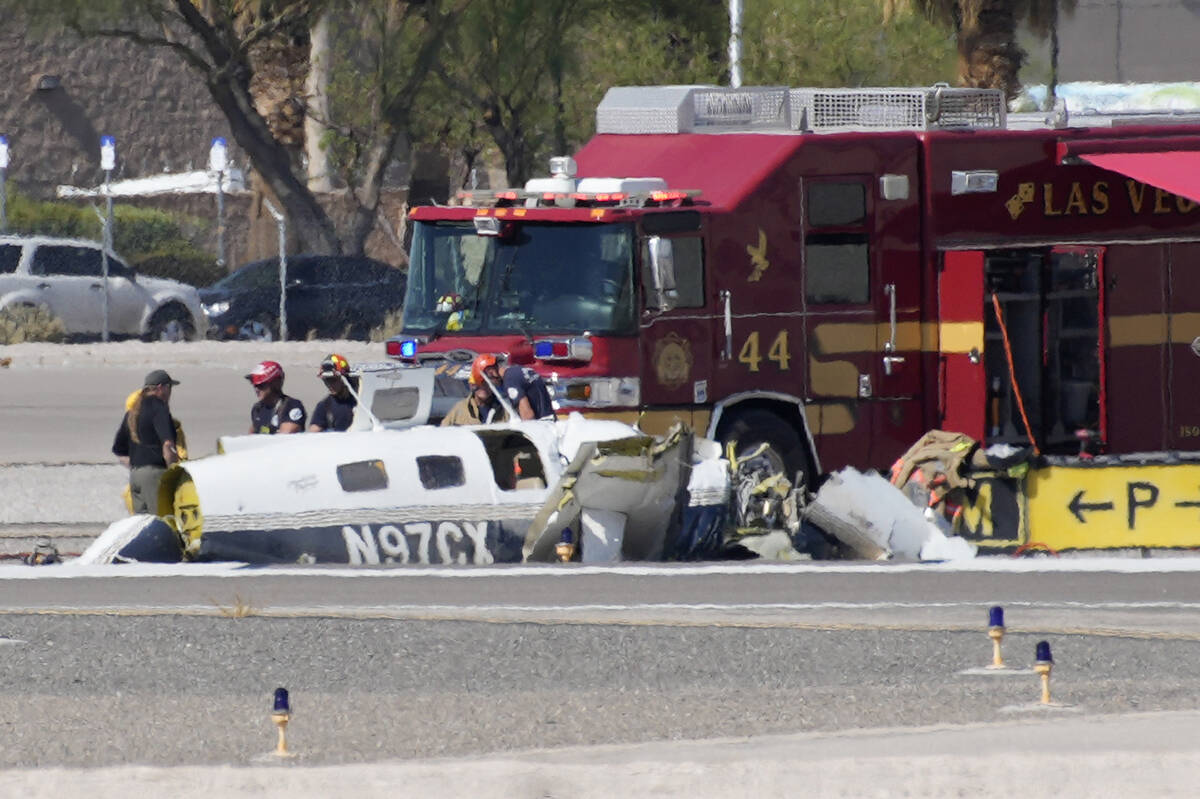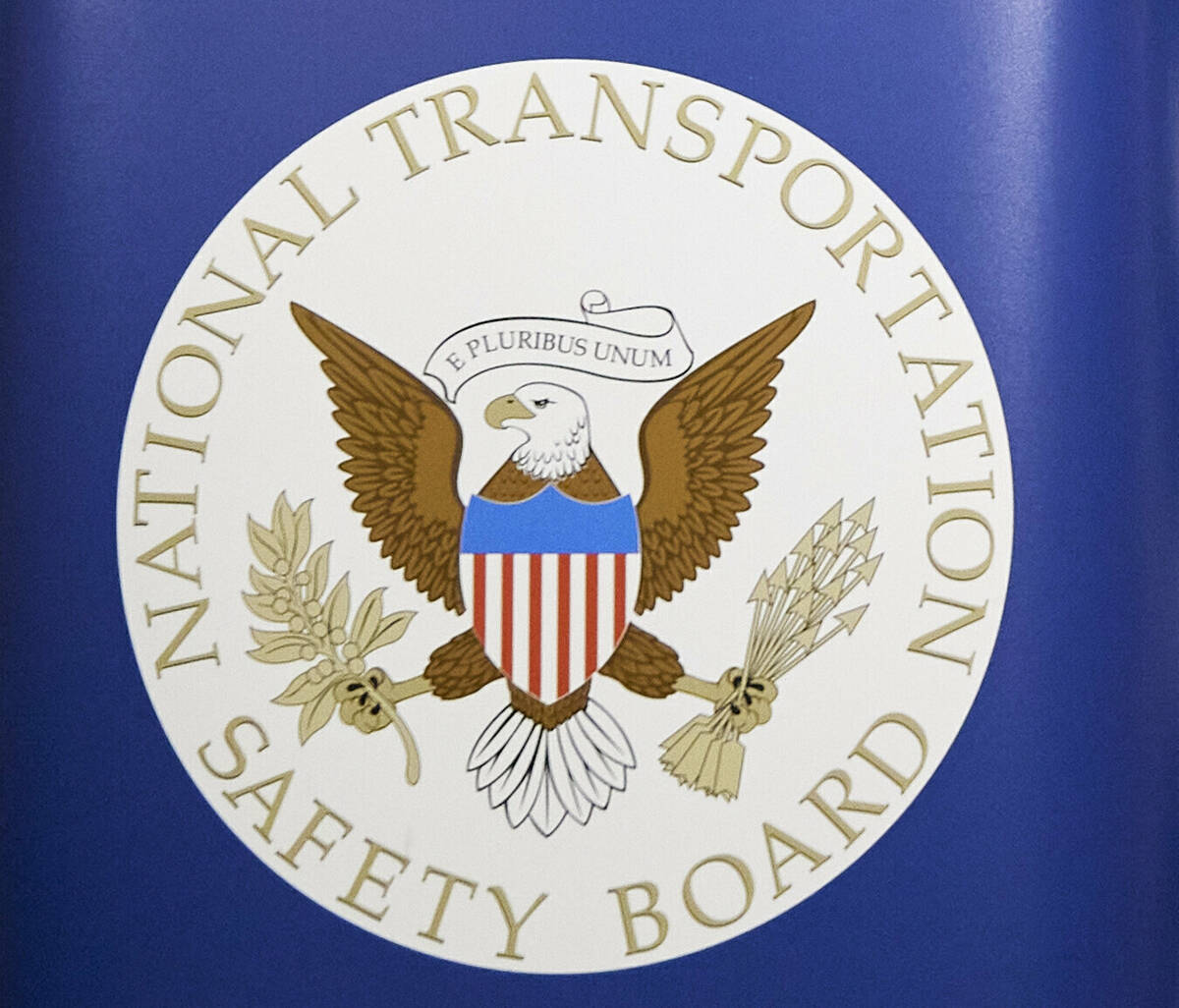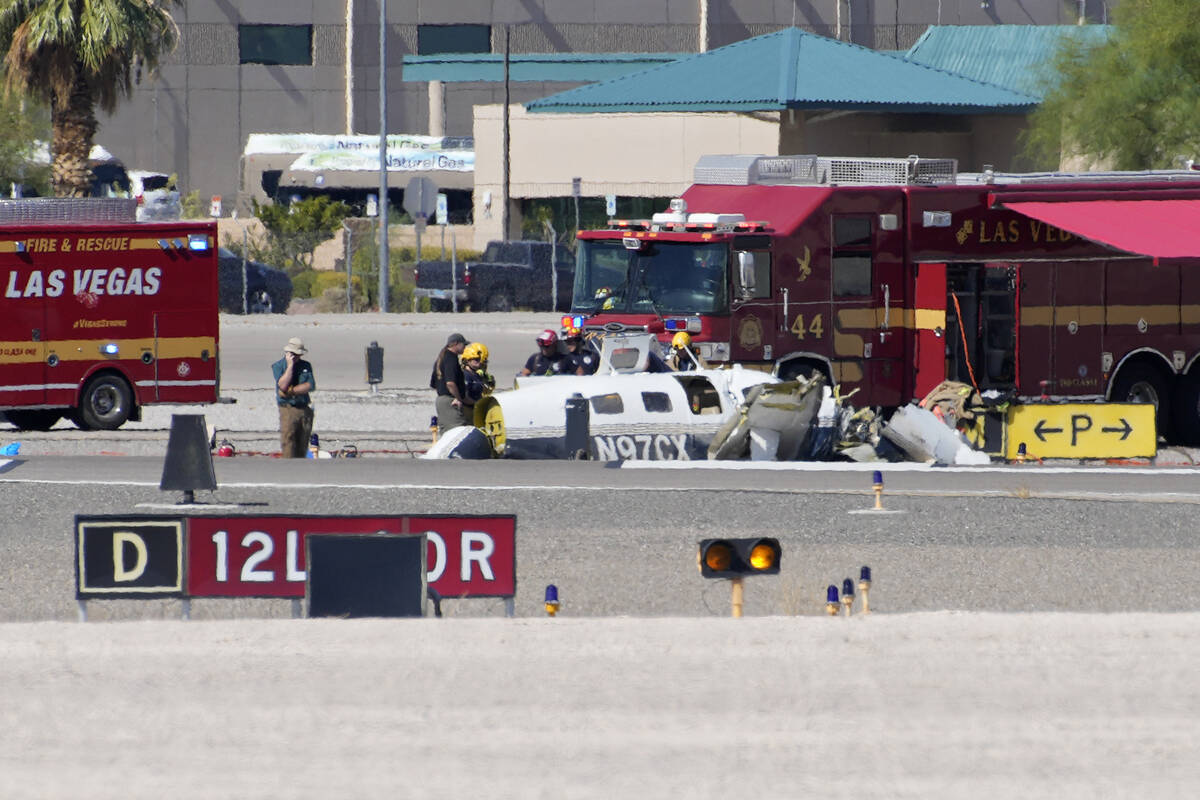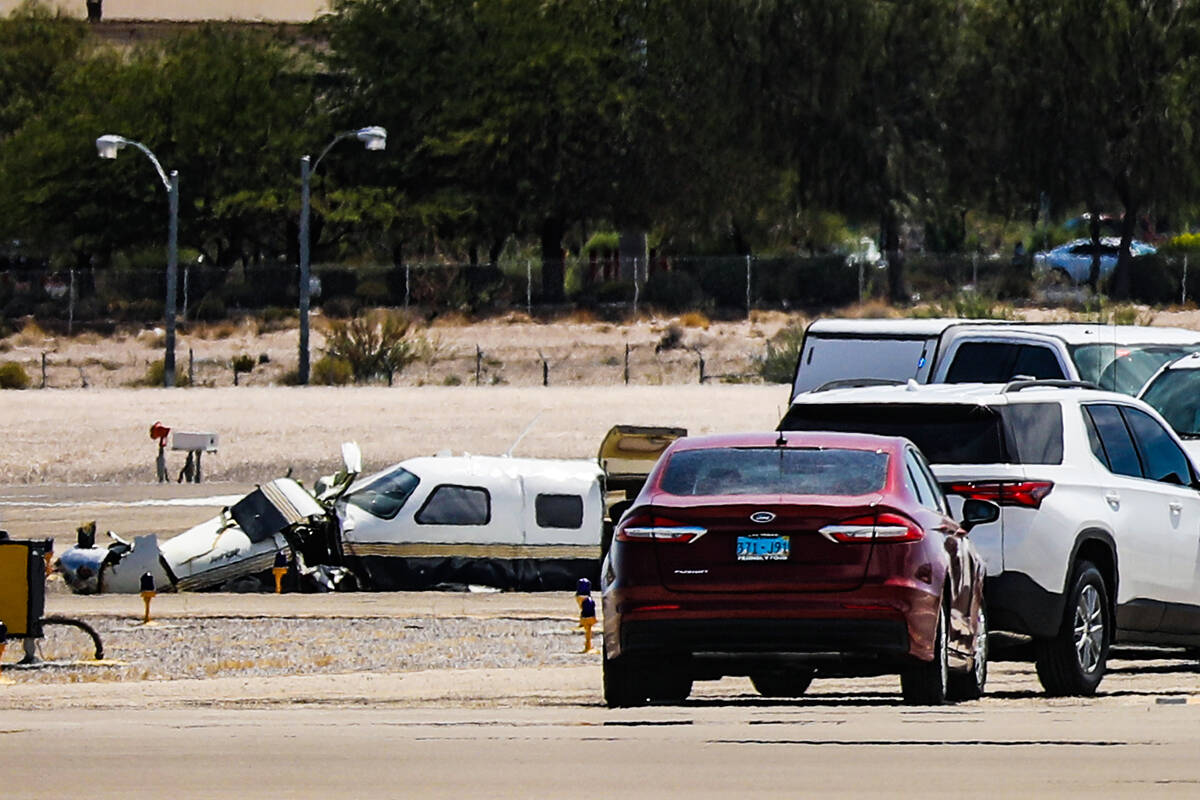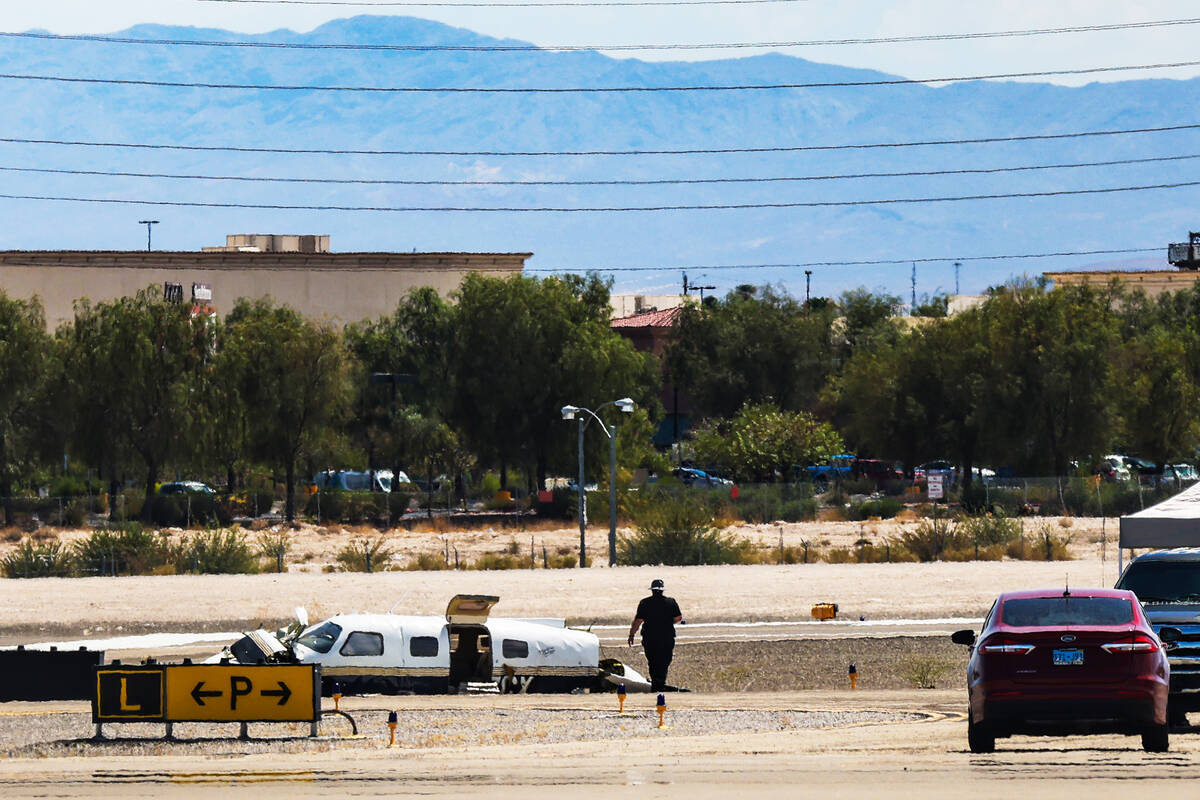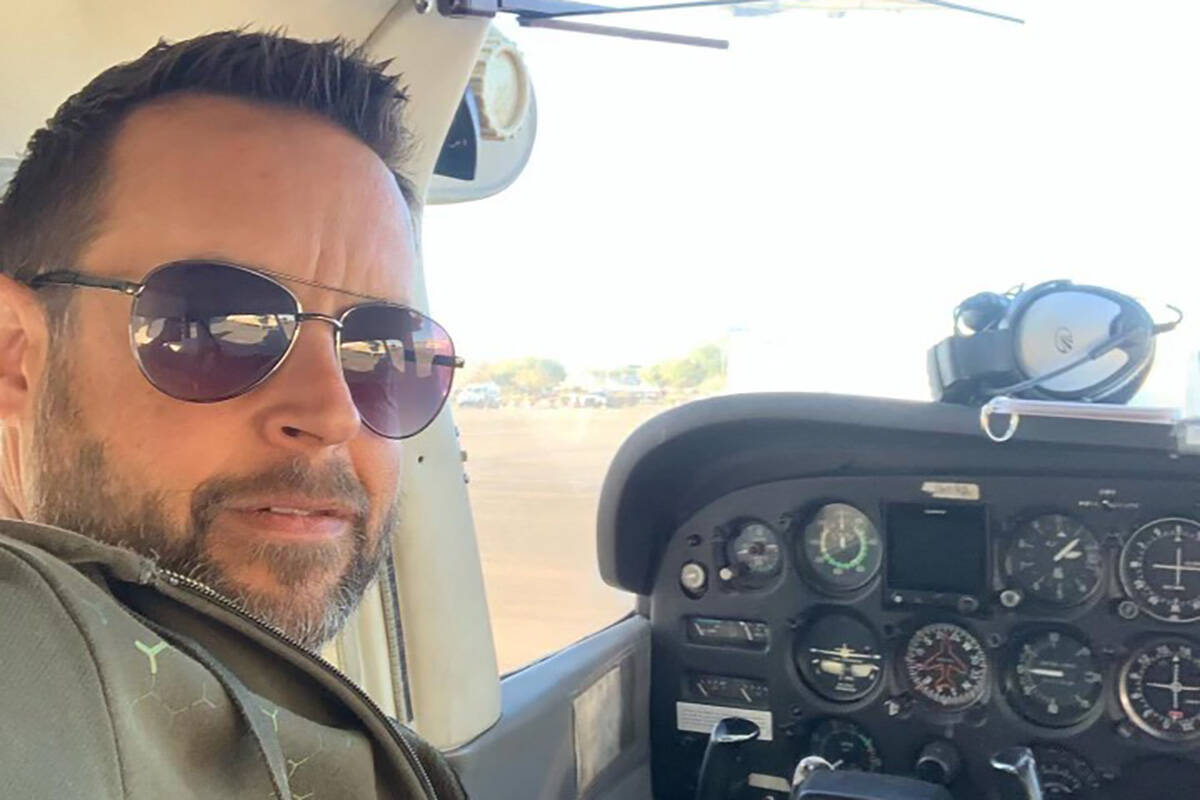Pilot’s errors, other issues cited as probable causes in fatal NLV midair plane crash
Pilot error, an overextended traffic controller, and staffing issues were the probable causes of a 2022 midair plane crash at the North Las Vegas Airport that killed four people, according to a final report by the National Transportation Safety Board.
The board released a 23-page report on Friday detailing its investigation into the July 17 collision that involved a Piper PA-46-350P and a Cessna 172N. According to the report, the two planes collided in the air as they approached parallel runways named 30L and 30R while trying to land at the airport.
The Review-Journal previously reported that Donald Goldberg, 82, and Carol Scanlon, 76, of Las Vegas, were in the Piper. Flight student Zach Rainey, 47, of North Las Vegas, and his instructor, Anthony Chiaramonti, 40, of Las Vegas, were in the Cessna. Both aircraft were listed as “destroyed” in Friday’s report, and all four people suffered fatal injuries.
The Piper had flown in from Coeur d’Alene, Idaho, while the Cessna had been conducting takeoffs and landings from the North Las Vegas Airport as a part of training.
“The National Transportation Safety Board determines the probable cause(s) of this accident to be: The low-wing airplane pilot’s failure to ensure that the airplane was aligned with the correct runway, which resulted in a collision with the high-wing airplane on final approach,” the report read. “Contributing to the accident was the controller’s failure to provide timely and adequate traffic information to either airplane and his failure to recognize the developing conflict and to act in a timely manner.”
The report refers to the Piper as the low-wing aircraft, and the Cessna as the high-wing aircraft.
The report also said that the Federal Aviation Administration’s “insufficient staffing of the facility” contributed to the crash, adding that it “required excessive overtime that did not allow for proper controller training or adequate recovery time between shifts.”
According to the NTSB, interviews with air traffic control tower workers revealed that most controllers worked 400 to 500 hours of overtime per year after the COVID-19 pandemic.
“The ATM stated that everyone on the team was exhausted, and that work/life balance was non-existent. It is likely that the cumulative effects of continued deficient staffing, excessive overtime, reduced training, and inadequate recovery time between shifts took a considerable toll on the control tower workforce,” the report said.
The final report also detailed the pre-existing health conditions of Goldberg, Chiaramonti, and Rainey, stating that all three had heart problems and were prone to “impairing or incapacitating cardiovascular events” such as arrhythmias or strokes.
However, the board said it was unlikely that such an event occurred for any of the three and that these medical conditions were unlikely to have caused the crash.
A preliminary report on the crash showed transcripts of radio traffic between air traffic control and those inside the Piper before the planes collided.
The Piper left Idaho around 9:45 a.m. and, at 11:56 a.m., was told by Nellis Radar Approach Control to land on runway 30L. At 11:58 a.m., the pilot of the Piper radioed to North Las Vegas that it was descending “for landing on three zero left,” according to the report.
Three minutes later, after being cleared to land, the air traffic controller transmitted to the Piper, “seven charlie x-ray I think I said it right runway three zero left seven charlie x-ray runway three zero left.”
The Piper’s pilot responded, “yeah affirmative runway three zero left that’s what I heard nine seven charlie x-ray.”
That was the last transmission from either plane, according to the preliminary report.
Contact Akiya Dillon at adillon@gmail.com.



